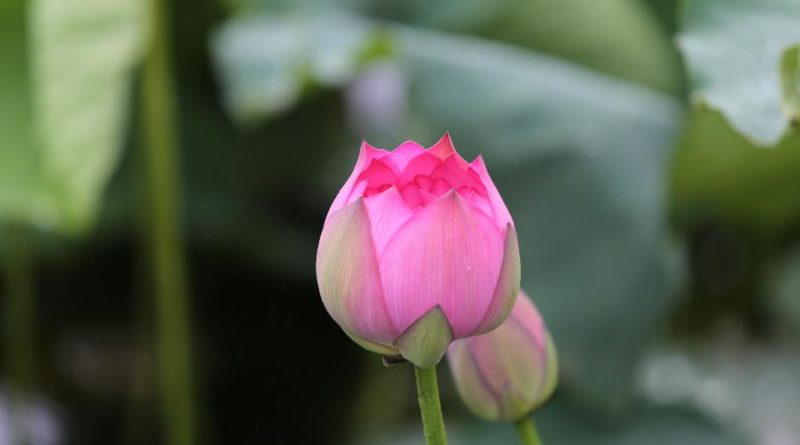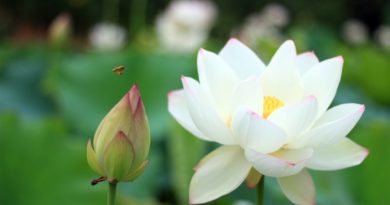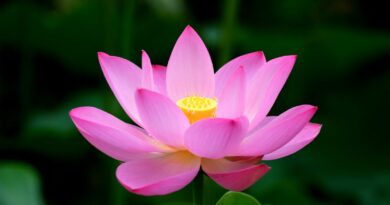PROMOTING BUDDHISM IN EUROPE – PROLOGUE
PROMOTING BUDDHISM IN EUROPE – PROLOGUE
Asoka Weeraratna was a man of vision who had the drive and stamina to translate his vision into fact. He once told me that his favourite saying of the Buddha was, “Do not become discouraged and give up, and do not rest satisfied with partial achievements.” He himself took this piece of advice to heart. Whenever he set himself a goal, he did not merely dream about it and sing praises to its glory. Rather, he worked with incredible foresight and energy to make the goal a reality.
Because he followed these guidelines, Asoka Weeraratna’s life was crowned by three great achievements: the establishment of the German Dharmaduta Society in Sri Lanka; the founding of the Berlin Buddhist Vihara in Germany; and the creation of the Nissarana Vanaya Hermitage at Mitirigala.
Already in the 1950s, he foresaw the potential for establishing Buddhism in the West, and to make his own contribution to the westward movement of the Dhamma, in 1952 he founded the German Dharmaduta Society. He started the Society in the back room of the family shop, though later it moved to premises purchased with funds he acquired through a zealous fund-raising drive.
Asoka realized that if Buddhism was to send down roots in Germany, it was not enough to set up a base for German Buddhist missions here in Sri Lanka. He saw the need to have a Buddhist centre right in the heart of Germany itself. Thus he personally searched for suitable premises throughout Germany, and he found the ideal site in the lovely Frohnau district of Berlin. The place he discovered was Das Buddhistische Haus, an old Buddhist compound built by Paul Dahlke in 1924. Under his initiative the German Dharmaduta Society purchased the compound, renovated it, and in 1957 brought it back to life as the Berlin Buddhist Vihara. In the same year, Asoka Weeraratna organized the first Buddhist mission to Germany, led by three Sri Lankan Bhikkhus accompanied by himself. From that time to the present, monks from Sri Lanka and elsewhere have lived at the Berlin Vihara, helping to maintain a Theravada presence in Germany.
Asoka Weeraratna later turned his attention to the construction of the Nissarana Vanaya Hermitage at Mitirigala, which became one of Sri Lanka’s most respected meditation monasteries. He equipped the monastery with all the facilities conducive to the meditative life, found an accomplished meditation master, Ven. Matara Sri Gnanarama Mahathera, to direct the meditation training, and then, his mission accomplished, he himself entered the Buddhist order under the name Ven. Dhammanisanthi Thera. Even by establishing Nissarana Vanaya, Asoka continued to make Buddhism available to Westerners, for the hermitage has accommodated Western monks resident in Sri Lanka since 1977.
Asoka and the German Theras
I myself first met Asoka in the early 1980s, when he was known as Ven. Dhammanisanthi. I immediately felt a close bond with him through his commitment to disseminating Buddhism in Germany. Though I am not German myself, my spiritual mentor was the great German scholar-monk Ven. Nyanaponika Mahathera, with whom I lived at the Forest Hermitage for twelve years. Ven. Nyanaponika and his teacher, Ven. Nyanatiloka Mahathera, also German, always had a keen interest in the spread of Buddhism in their native country. In this respect they shared a common vision with Asoka, which they expressed by their support for the German Dharmaduta Society. Ven. Nyanatiloka served as the first patron of the Society during the early 1950s, and through the years Ven. Nyanaponika was always ready to give advice. Before he left for Germany in 1982 to take up residence at the Berlin Vihara, Ven. Dhammanisanthi came to the Forest Hermitage in Udawattakele, Kandy to meet Ven. Nyanaponika. The two monks spent several hours, spread over two days, discussing prospects for the spread of Buddhism in Germany. I still recall that the discussion presented an interesting contrast between Ven. Dhammanisanthi’s enthusiastic optimism and Ven. Nyanaponika’s pragmatic realism and restraint.
An Opportune Time
The topic of this seminar, “The Necessity for Promoting Buddhism in Europe,” is quite appropriate for commemorating Ven. Dhammanisanthi, and reminds us of his life’s mission of trying to bring the Sasana to the West. The topic is also very timely, for the opportunity for disseminating Buddhism in the West is much more ample today than it was fifty years ago when the German Dharmaduta Society was born. At the same time, however, we should not assume that Buddhism is barely known in Europe and has to be introduced almost from scratch. To the contrary, in the past two decades public awareness of Buddhism in the West has increased sharply. In many Western countries today Buddhism is the fastest growing religion. In North America, Western Europe, and Australia-New Zealand, hundreds of Buddhist centres have sprung up almost overnight, offering teachings and meditation retreats even in remote regions. Thus the challenge we face is not that of discussing how to introduce Buddhism to Europe as though it were an utterly unfamiliar creature, but of discovering how to promote the healthy growth of a Buddhism already sending down roots into European soil.
I will deal with my topic in three major parts. First, I will present a short survey of the historical development of Buddhism in Europe. This will necessarily be oversimplified and thus inadequate, but my aim is not so much to lay out all the facts as to show how Buddhism has arrived at its present stage of development in the West. Second, I will raise the question why Buddhism, at just this particular time, is exerting such a strong appeal on Westerners. Then, in the third place, I will briefly discuss a few special problems we face in trying to make our own Theravada form of Buddhism accessible to the West as a living and relevant tradition.









